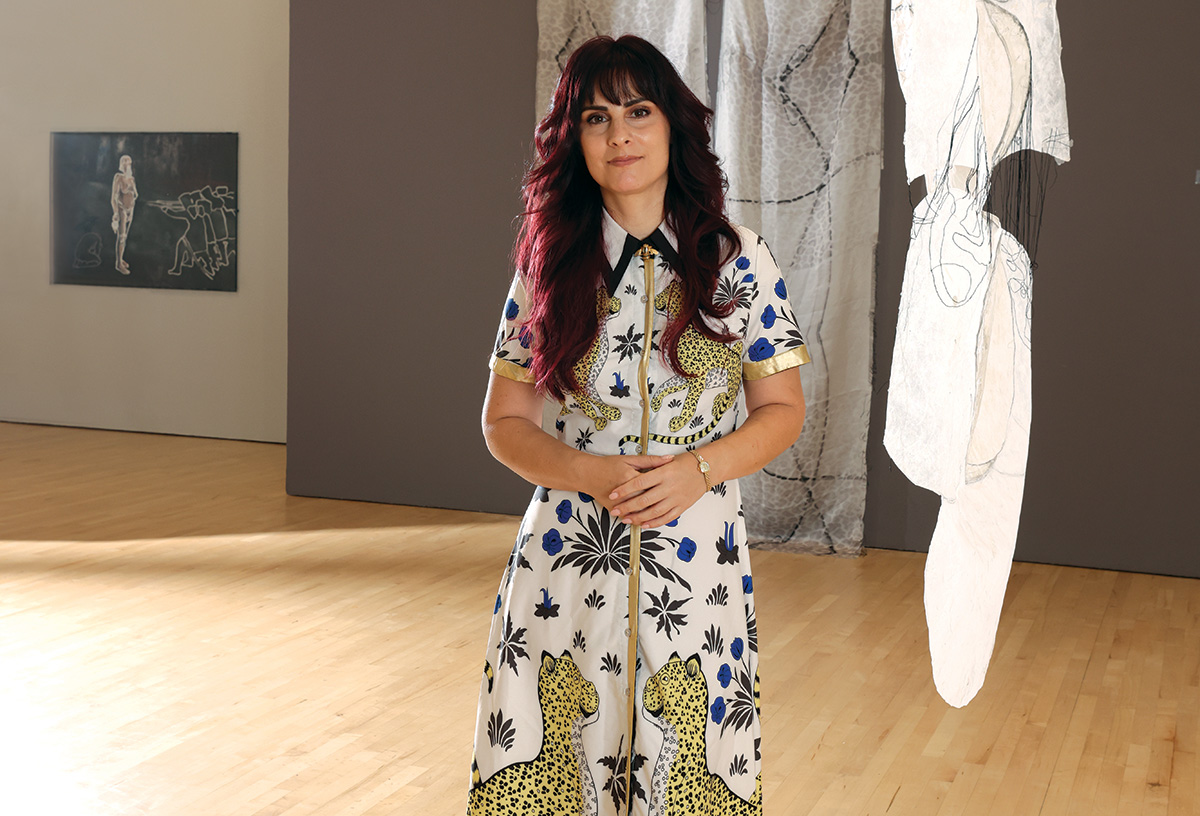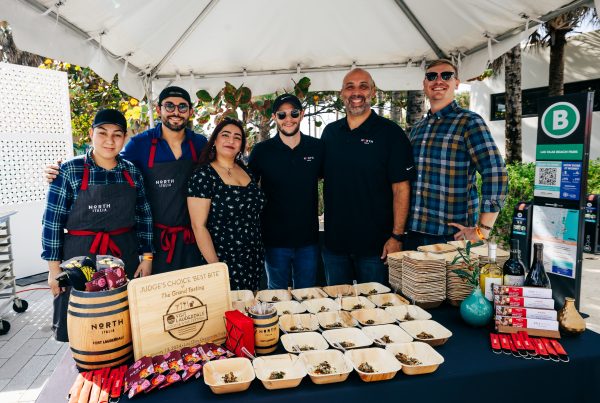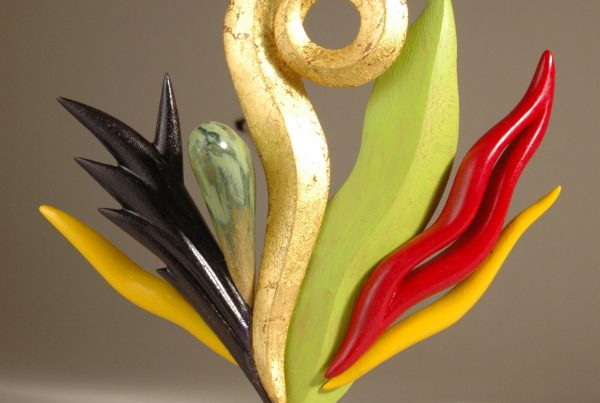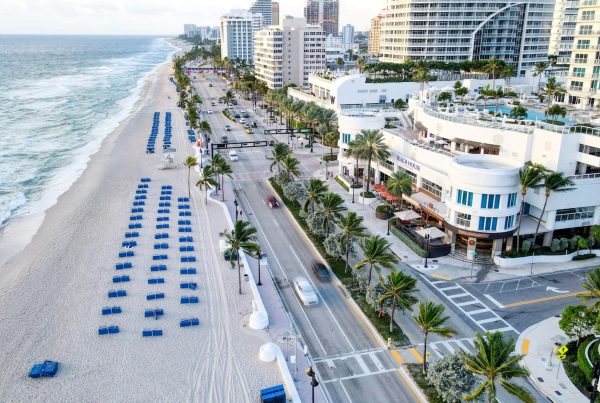Quebec native Véronique Côté is an accomplished visual artist, but when it comes to discussing her life and career, she prefers to advocate for others. “I’m on the autism spectrum, so [I’m] uneasy talking about myself and having all the attention on me,” she says. “But I realized I was a lot better at masking it for other people—so being the salesperson, the hype person, the cheerleader, the organizer.”
She enjoys this role every day as director of galleries at FAU, where she was appointed in 2022 after the retirement of Rod Faulds, who had held the post for 25 years. Côté oversees FAU’s recently expanded gallery footprint—not only the core art galleries of the Ritter and the Schmidt but an anthropology gallery and the Fogelman Sports Museum—with future gallery spaces in the works.
No stranger to South Florida, the well-traveled Harvard graduate (with a master’s of arts in Museum Studies) had previously worked as an internship coordinator at Perez Art Museum Miami before spending nearly two years running Buffalo’s CEPA Gallery, one of the nation’s most prominent photography galleries. But when Faulds’ position became open, it wasn’t a hard sell to return. Coming from frigid Buffalo, she says, “I appreciate the sun, and as a person who feels more than I talk, there’s a really high value to having so many days of sunshine in the year.”
What’s unique about FAU Galleries?
The galleries are 99 percent staffed by students. … There’s only me that is not a student at FAU. We’re working on formalizing the way we present it to the public as a student-run museum. … That will allow us to teach people cultural asset management not from an academic, theoretical perspective but a hands-on, working experience.
What’s your proudest accomplishment so far as director of galleries?
[For an exhibition at the Fogelman Sports Museum], we brought in a contributor from Miami who has a big collection of Negro League memorabilia. We brought him to talk about his experience as a player in the Negro Leagues. We had to Uber him. And we told the Uber driver, “Please, he’s old, he doesn’t have a cellphone, find him, we don’t know where he is!” She searched for 25 minutes. She found him. She was a beautiful young Black woman. Because she put so much time trying to make him secure, she stayed for the lecture. And she asked him a question that I thought was candid: “What is your biggest regret; would you change anything in your career?”He said, “My only regret is that I didn’t graduate high school, and I would have liked to have gone to college.” And after that, she was silent. The day afterward, my secretary walked her to the registrar’s office, because she had dropped out of school, because she’d had a baby in high school. And it was two years ago, and she finished high school, but she never got back to college. And she went and registered for classes, because she said it was the first time she heard people talk about her own experience.
Your own art addresses American culture through the eyes of a foreigner. How does your heritage affect the themes in your work?
I’m an Inuit and a French-Canadian, so even in my home country, I’m a minority twice over. I think it makes me an outsider almost everywhere I go. But it’s also part of the Inuit culture—I grow where I’m sowed.
I have an almost unhealthy fascination with culture. It’s probably my autistic superpower; I overanalyze cultural backgrounds and specificities and see patterns, and that shows in my work. I like to repurpose culture in ways I find logical. As a young artist, it was a way to reconcile how I felt like I was constantly putting my sweater on backwards, culturally. Most of my work is in that range, where it’s like, “Oh, is it Mexican? Is it Inuit? Is it American?” People can pick up all of those references, but something’s not quite aligning. It looks at the distance between the perceived identity and the identity people actually see.
Outside of your capacity at FAU, do you still have time to create art?
Maybe in a few years; I still exhibit a little bit, but my bandwidth is minimal. I’m hoping that as I age into this position, things are going to get easier and more automated, and hopefully I’m going to get back to my exhibiting.
Between your galleries, the Boca Raton Museum of Art, and other major galleries, should Boca Raton be drawing similar attention from the art world as Miami does?
I’m hoping, and I think they’re trying. [The city] just hired a public art coordinator. I hope they put finance and support behind that person to make it grow. It’s going to take a huge mentality change in Boca, but I think we can. We can be just as exciting in a different way. … I see people in power actually using their power to elevate, support and help.
IF YOU GO
WHAT: “Common Ground: Imagined Landscapes Through Design” explores the tension of humanity’s involvement in nature through iconic Israeli landscapes
WHERE: Schmidt Center Gallery at FAU, 777 Glades Road, Boca Raton
WHEN: July 2-Sept. 23
COST: Free
CONTACT: 561/297-2661, fau.edu/artsandletters/galleries
This article is from the July/August 2024 issue of Boca magazine. For more like this, click here to subscribe to the magazine.







